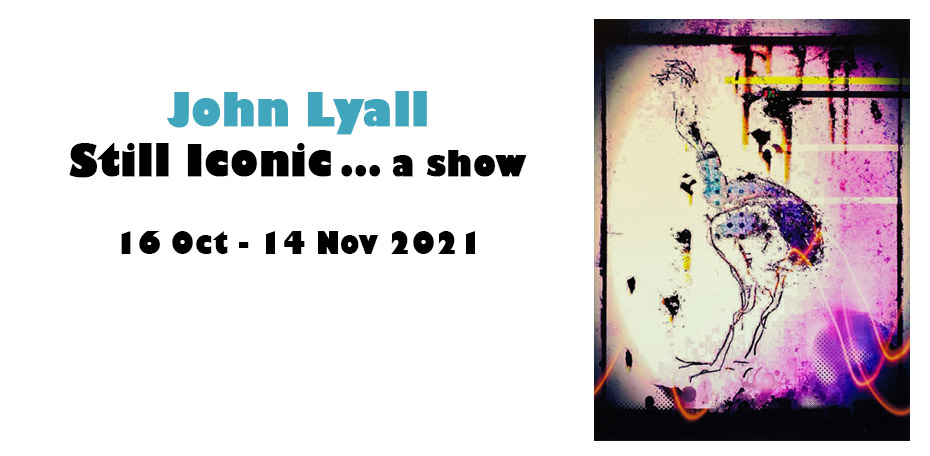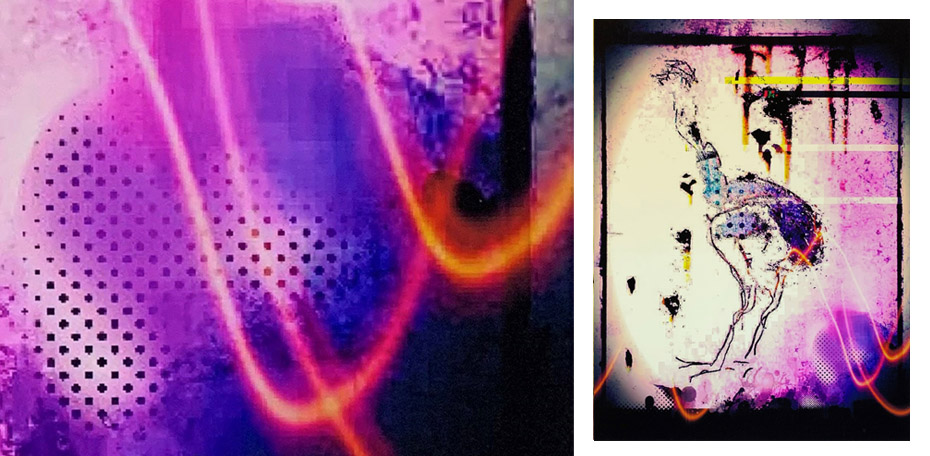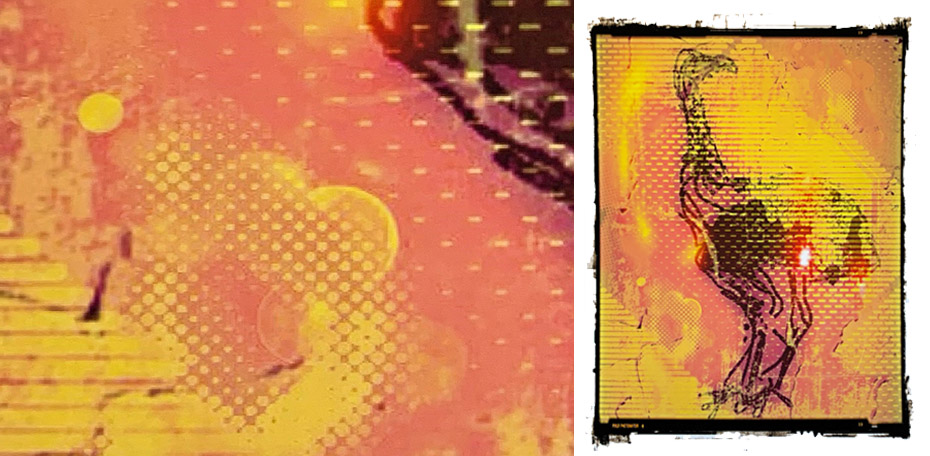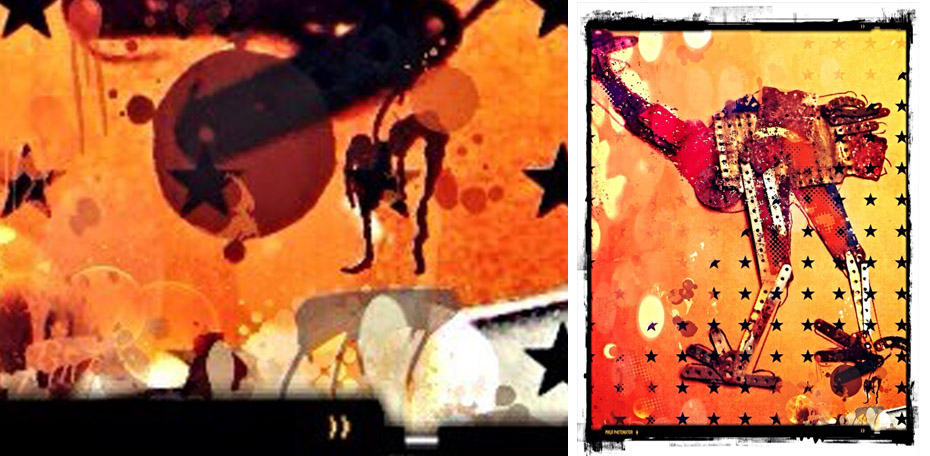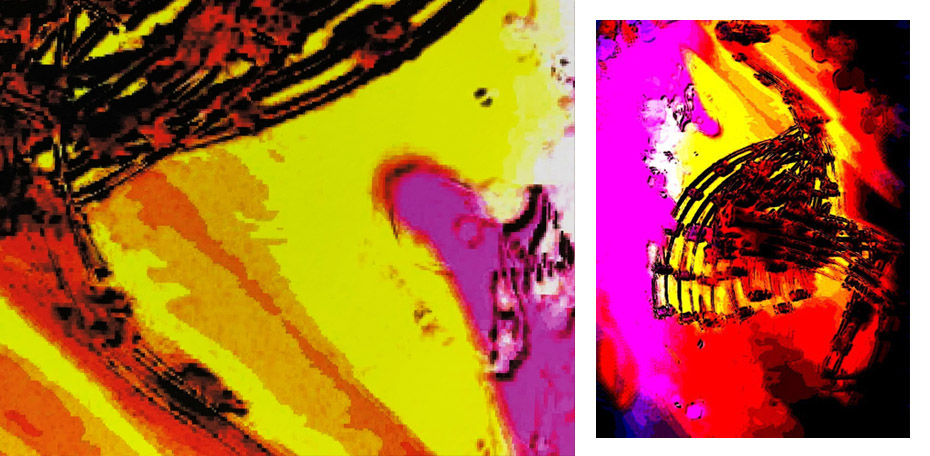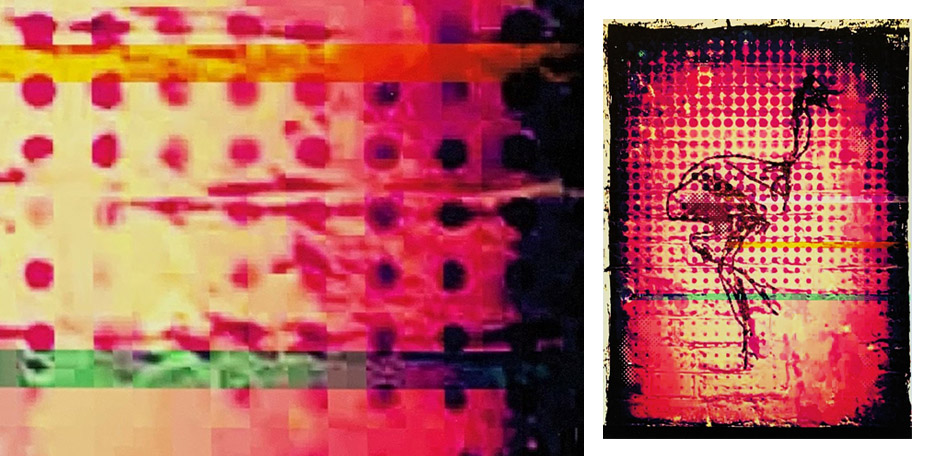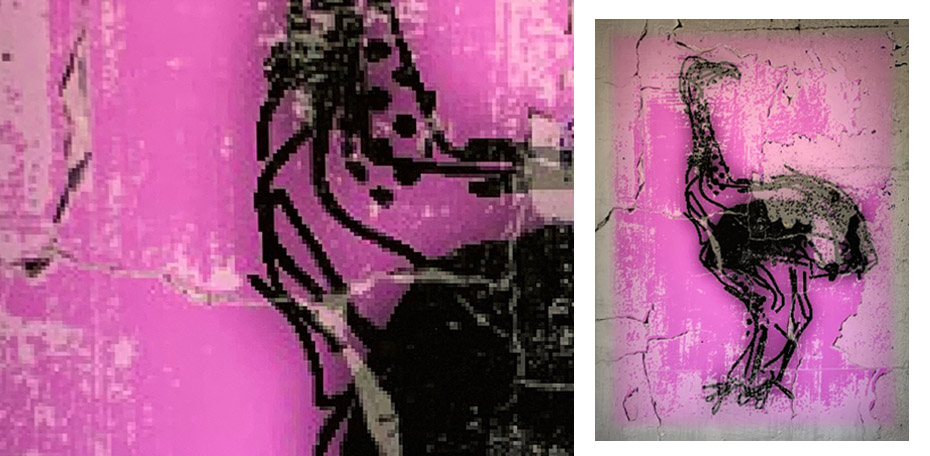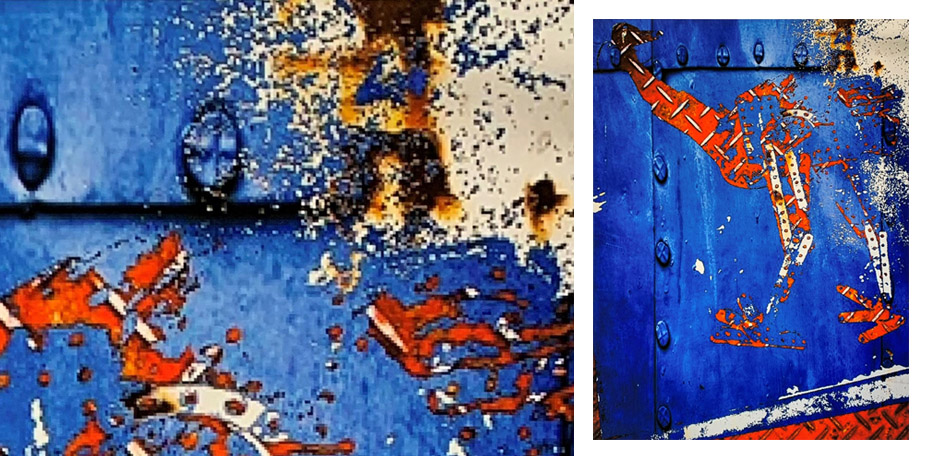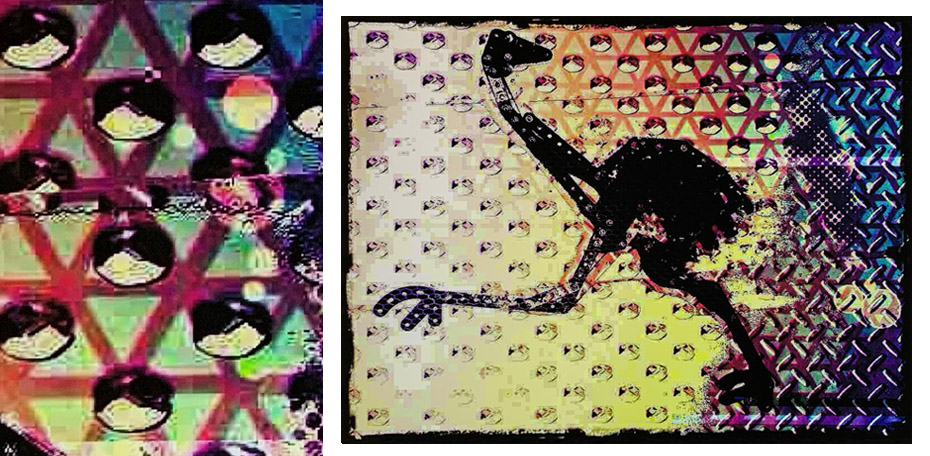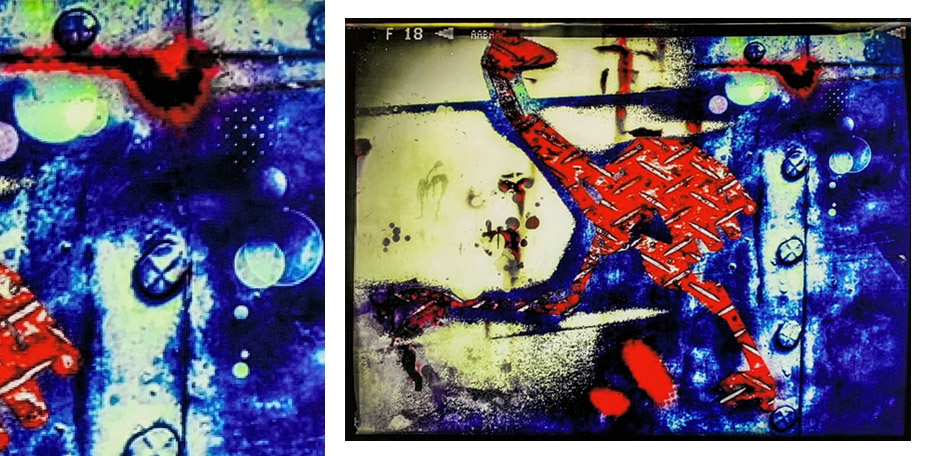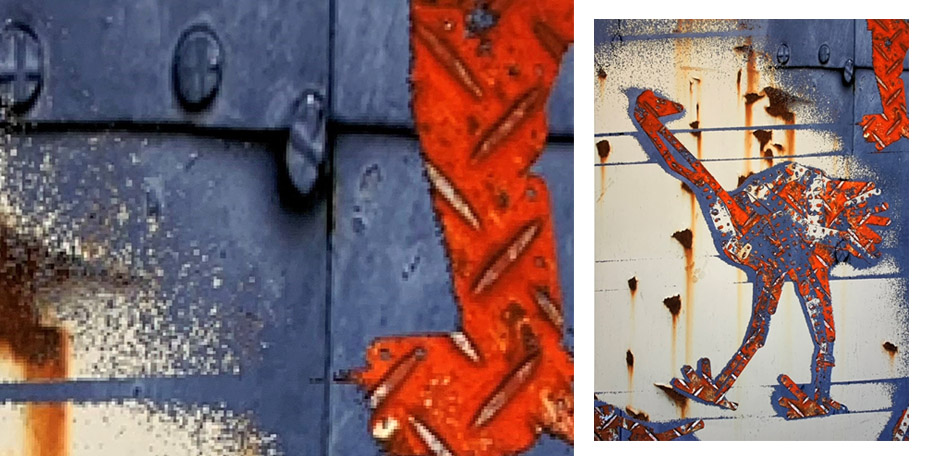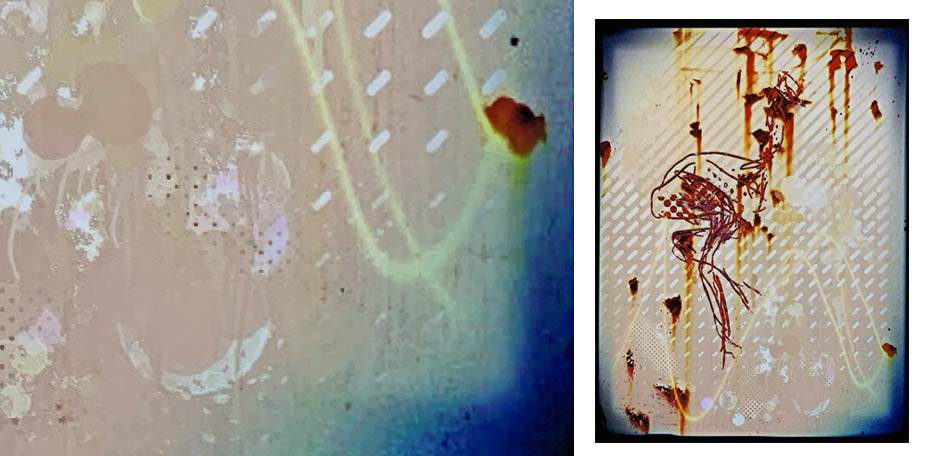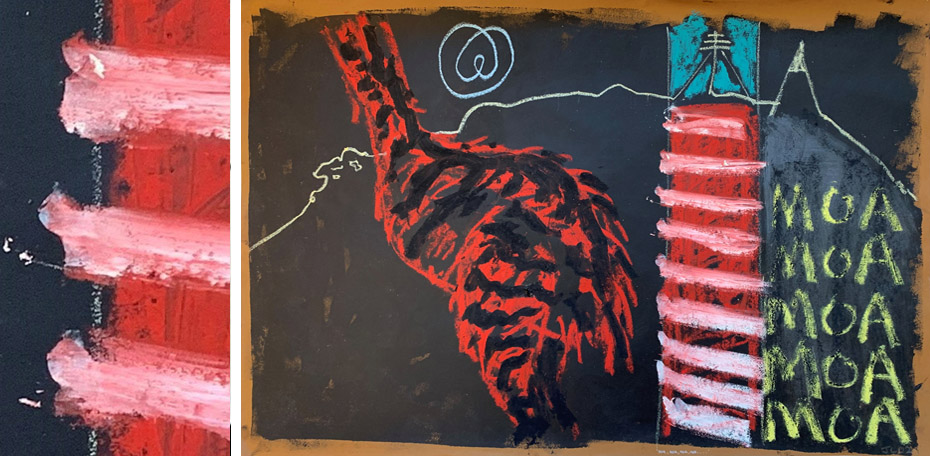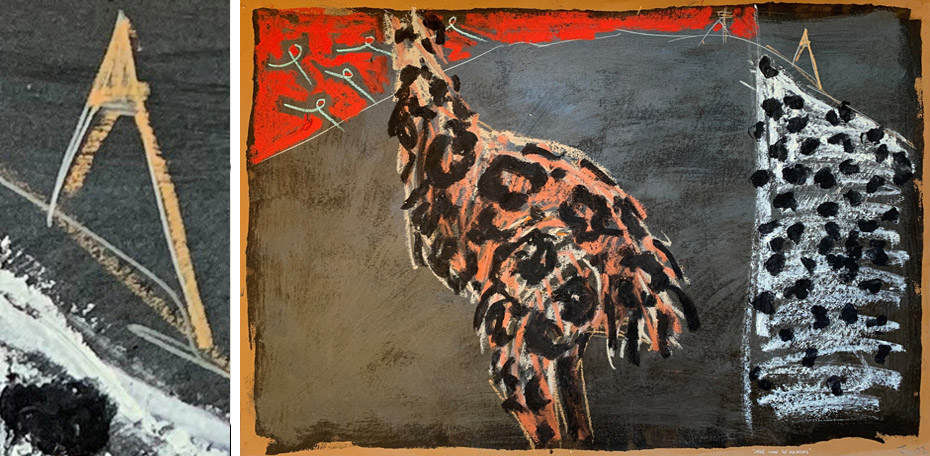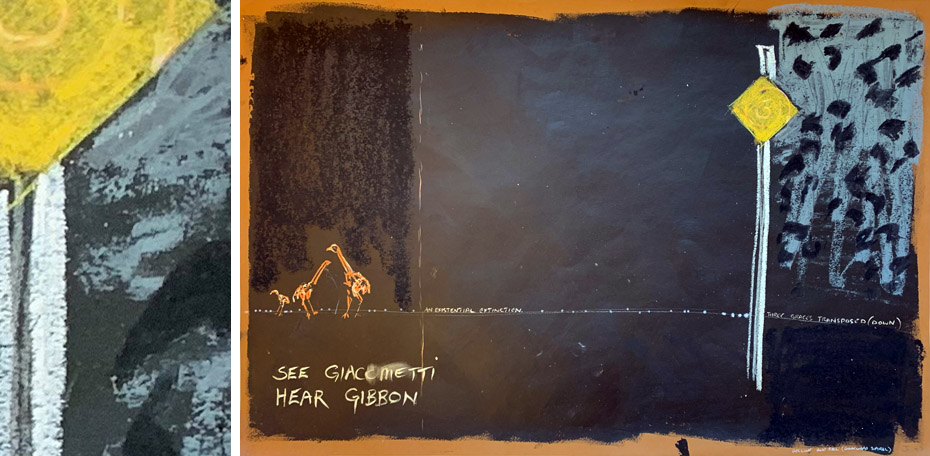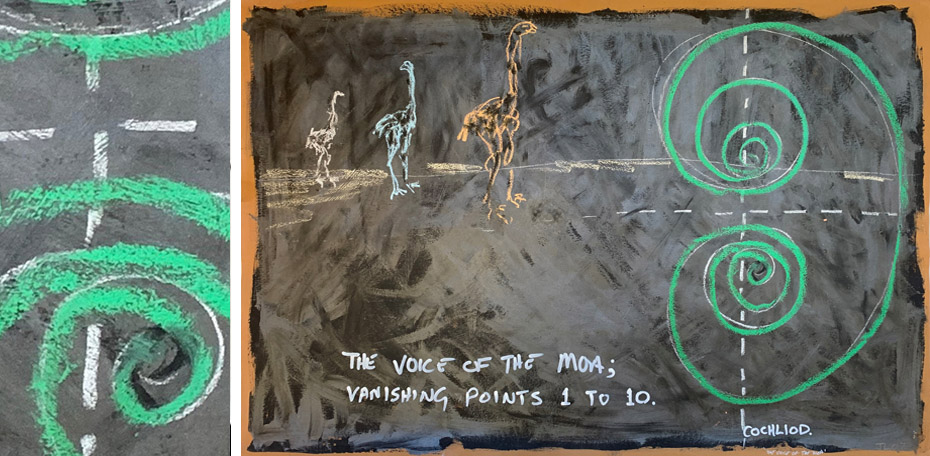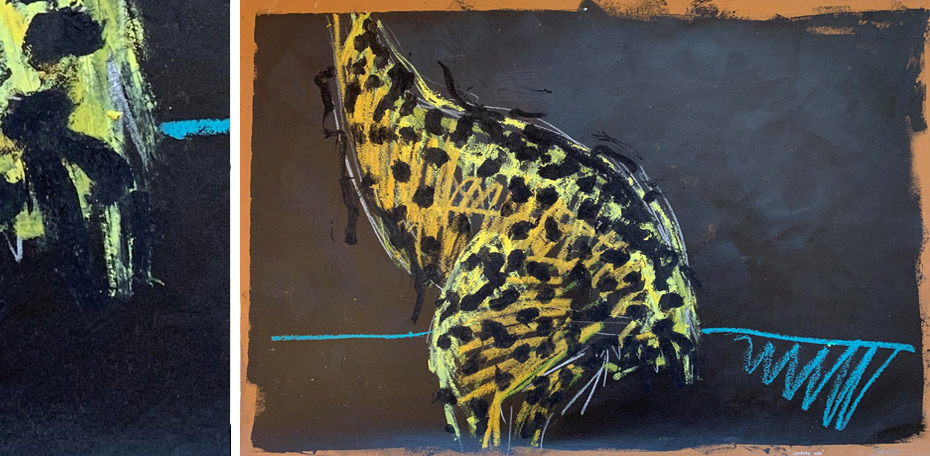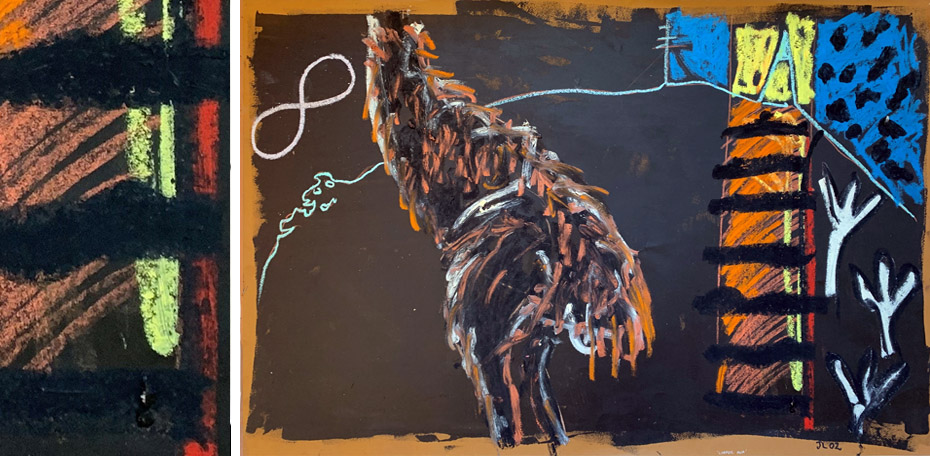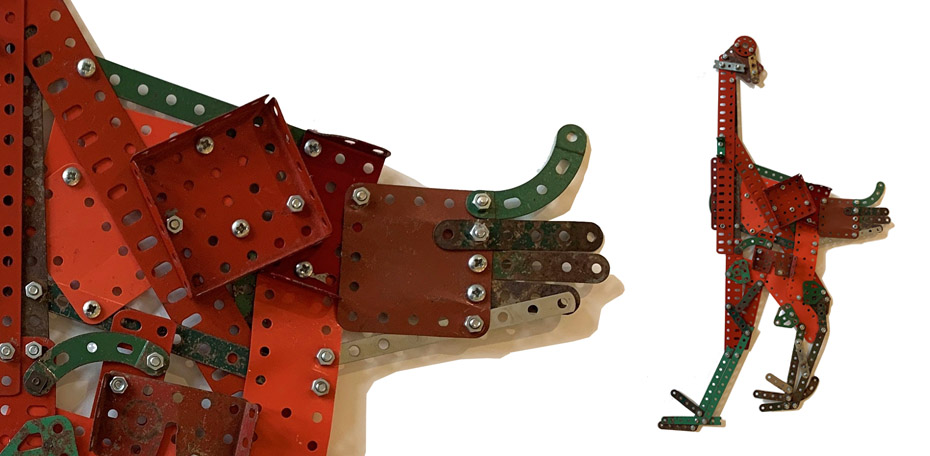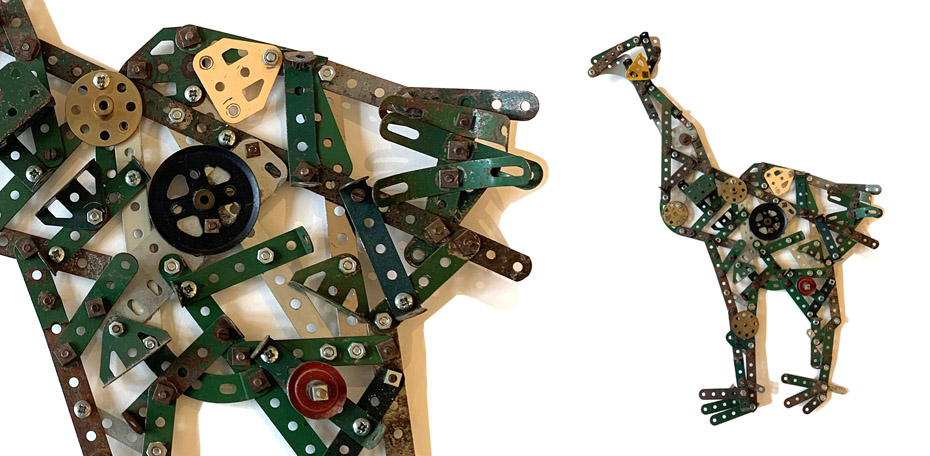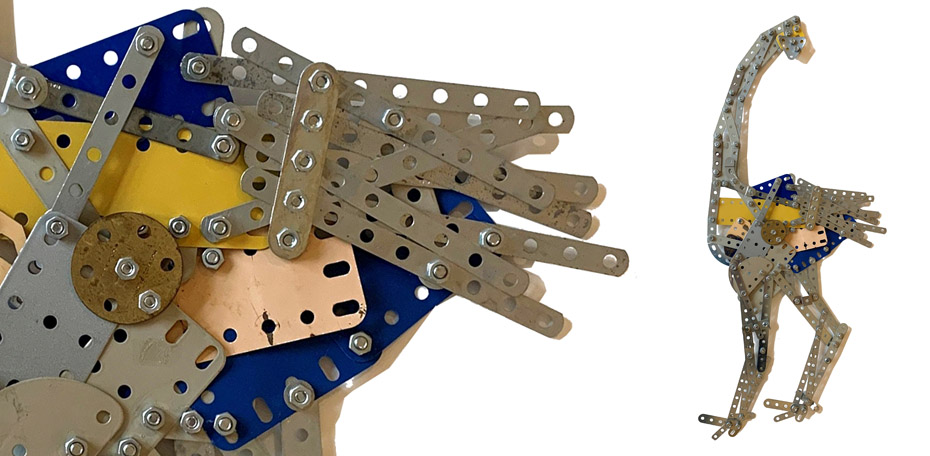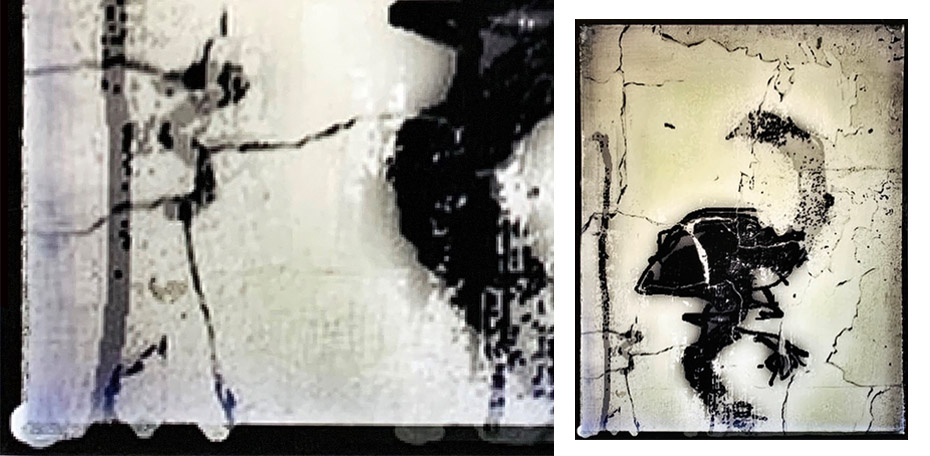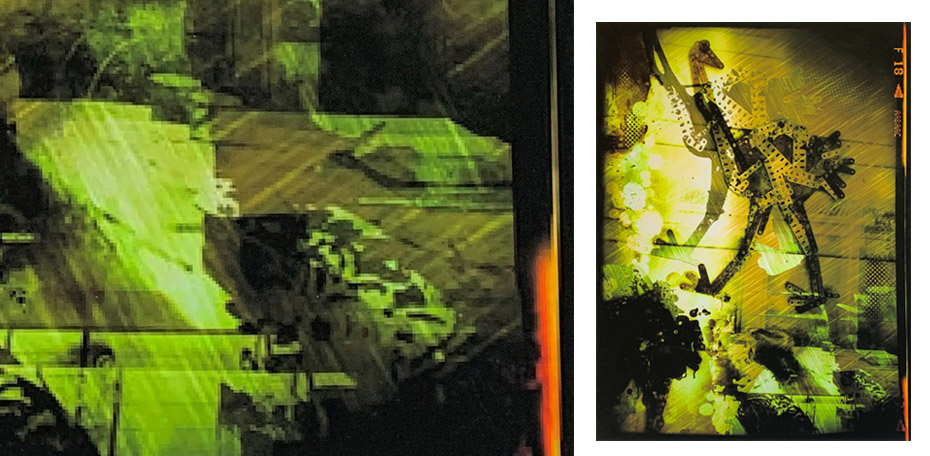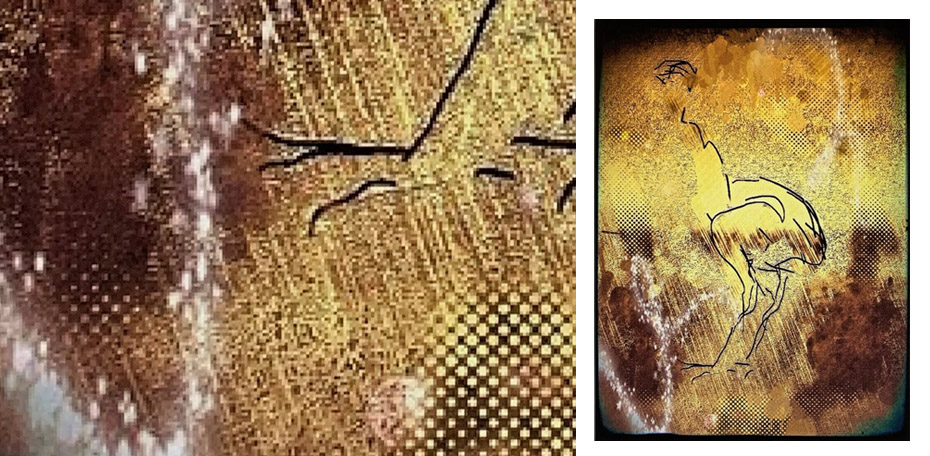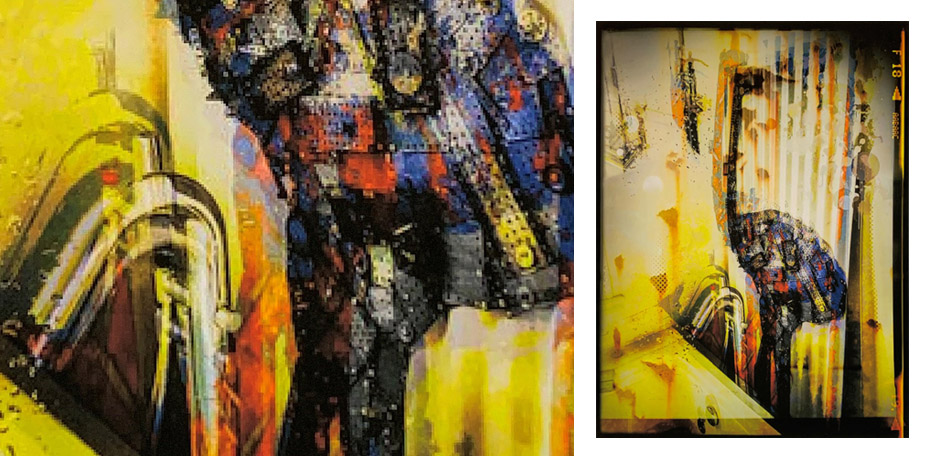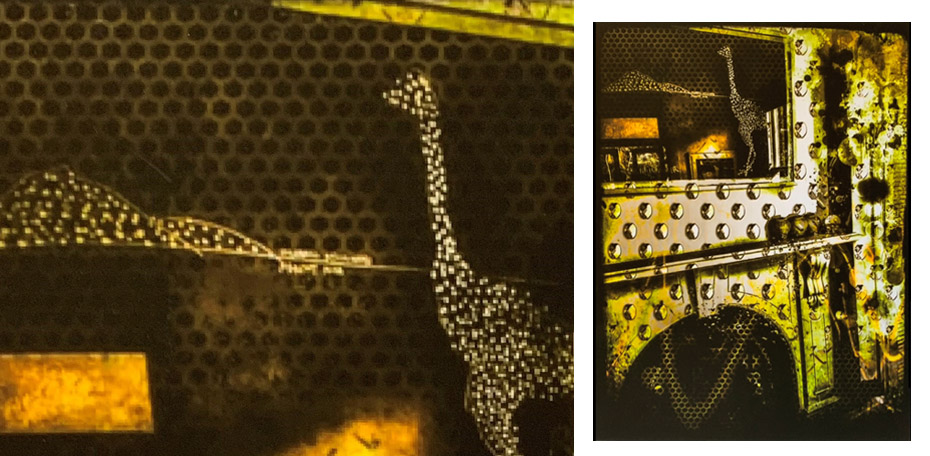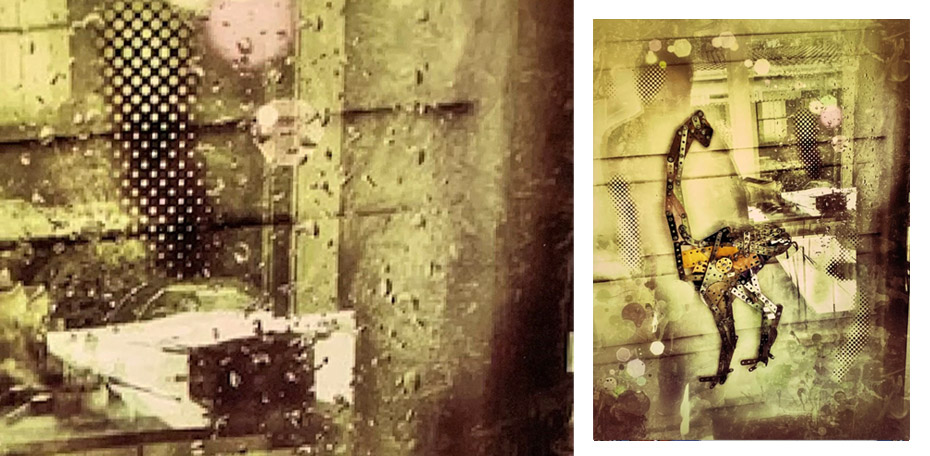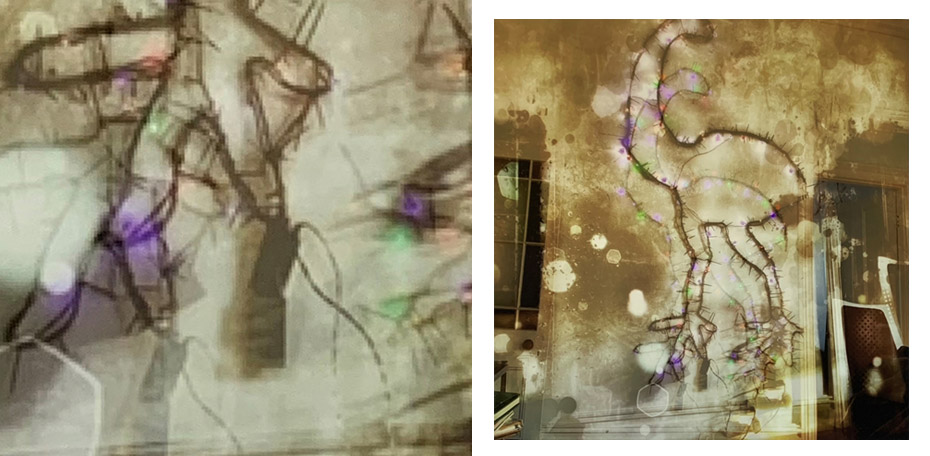Limited Edition Prints – Lyall describes his process in creating these original works
Some of the images started as drawings by my finger on the iPad
Some of the images started as my photographs…
Some were iPad photos of my Meccano sculptures
Some were iPad photos of my oil stick drawings, and so on …
It’s a regenerative process but once in the tablet they become images to manipulate [a lot].
The processes of manipulation are all on the iPad Pro but any one image has been through a unique series of applications and programs to reach the desired outcome. Sometimes up to hundreds of times. All tweaked, adjusted, altered and ‘improved‘ by my fingers interacting with the image on the tablet.
I use about 30 3rd party apps as well as the native iPad programs. The sequence is vitally important in getting the desired result. I have been using the iPad then iPad Pro for more than ten years. The apps just get better.
The works are giclée prints and are printed by a high end printer. They are printed on a 12-ink large format printer using archival paper. The paper is a 308 gsm, Hahnemühle, cotton rag paper tested by the Wilhelm Institute as archival for 100+ years. I chose this paper because I like its weight, softness and slight warmth. It has the look and feel of a quality fine art etching paper. They are printed in limited editions of 2 only.
The term ‘giclée’ is derived from the French word for ‘spray’ and was first coined by Jack Duganne, a printmaker, to represent an inkjet-based digital print used as fine art. Giclée printing refers to a printmaking method that involves using a digitised image output from a computer to a large format inkjet printer. To qualify for the title of a “fine art giclée print” it should be made on archival quality coated paper, and printed with pigment based archival inks, which are UV stable. By using pigment based archival inks, the archival properties of a giclée print are significantly higher than traditional silkscreen or litho prints.
Oil Stick Moa Drawings – the Artist’s process
The oil stick drawings in this exhibition were first shown in 2002 in ‘A Moa, a Math, a Mount’ (referring to Moas, Cartesian equations and Mount Eden).
The works are drawn in various combinations of oil stick, oil pastel, marker pen, pencil and white biro. They are drawn on heavy paper that was first coated with black gesso over which Lyall applied blackboard paint. On some of the works, a dark grey micaceous ground was applied to give a metallic feel.
Background
Born in Sydney in 1951, multi-media artist John Lyall studied sound and performance at the Sydney College of the Arts, graduating with a BA (Visual Arts) in 1982. Moving to New Zealand in 1983, he graduated from the Auckland Secondary Teachers Training College (Art and Art History) in 1984 and earned an MFA from Elam in 1993.
Lyall’s multi-disciplinary background has ensured that he continues to work in many media. He has presented performances in Japan, South Korea, UK, Australia and NZ, including the Nine Dragon Heads art symposium (Korea); Artspace’s inaugural Sound/Watch festival, Auckland. (1989); SoundCulture, Tokyo (1993); and the inaugural Auckland Triennial: Bright Paradise (2001). Lyall’s interest in the bizarre ways nature can become culture are evident in books he has co-authored and his contributions to numerous international publications. He is perhaps best known for his exquisite, large-format photographs featuring strange depictions of nature from the partially demolished Bird Hall, Auckland Museum.
Much of Lyall’s practice responds to NZ iconography. His preoccupation with the moa started on the first day he arrived in NZ in 1983. A BBC team was in NZ, filming a Japanese doctoral student in Fiordland. Convinced the birds were not extinct, the ‘moa hunter’ had made a sounding device (supposedly replicating the moa’s voice), sending amplified, computer-generated ‘moa calls’ out across the fiords – there was no answer. The tale of unrequited love was explored in Lyall’s ‘cyber-opera’, Electronic Moa, performed as a part of SoundCulture, Auckland (1999), and later at Lancaster University, Lancaster, UK.
Since then, moas have featured regularly in Lyall’s work – oil stick drawings, iPad drawings, moa silhouettes (created out of vintage Meccano and clockwork train tracks) and a flickering two and a half metre tall moa outline in coloured LED lights. In an exhibition in the ARKO Gallery, Seoul, South Korea (2010), he displayed photographs of a moa tattoo, and a fibreglass moa he had spotted, oddly, in a Seoul bakery during an earlier visit.
Still Iconic… a show
Now in 2021, Still Iconic… a show brings together a selection of Lyall’s oil stick moa drawings and Meccano moas alongside a new series of iPad processed drawings and photographs. Using an iPad Pro, with bigger screen, better colour and higher resolution, these much-altered images are better, denser, stranger and even wilder.


